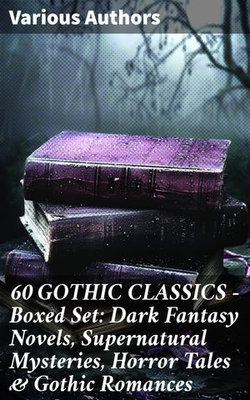The '60 GOTHIC CLASSICS - Boxed Set: Dark Fantasy Novels, Supernatural Mysteries, Horror Tales & Gothic Romances' invites readers into the shadowy, enchanting realms of Gothic literature. This anthology masterfully curates an array of thematically rich narratives that dissolve the boundaries between dark fantasies and chilling mysteries. The collection's diversity is showcased through its breadth of literary styles 'Äî from spine-tingling horror stories to evocative Gothic romances. Standout pieces evoke haunting atmospheres, capturing the intricate dance between fear and fascination that defines the genre's allure. Collectively, these works illuminate the Gothic tradition's enduring impact on the literary landscape, offering a comprehensive exploration of its multifaceted essence. The anthology draws from the towering literary figures who have defined and redefined the Gothic genre across centuries. Authors such as Charles Dickens, Mary Shelley, Edgar Allan Poe, and Henry James intermingle with masters of the macabre like Bram Stoker and Ann Radcliffe. This confluence of voices reflects historic, cultural, and stylistic shifts within the Gothic movement, akin to a grand kaleidoscope of dark narratives. Each author's contribution enriches themes of the supernatural, the mysterious, and the emotional depths of human psyche, collectively forming a transcendent tapestry of literary exploration and innovation. A rich trove for both Gothic aficionados and newcomers, this anthology offers a unique opportunity to traverse countless mysteries, romances, and fears within a single volume. By mingling diverse perspectives with thematic breadth, the collection fosters a dialogue between notable authors from varying eras, allowing readers to explore insights into human nature and the supernatural's allure. Perfect for educational study or personal exploration, this boxed set promises to deepen understanding of Gothic traditions while providing an enthralling reading journey through the shadowy depths of literary imagination.



Share This eBook: